Hollow light guides: what are they and why are they needed?
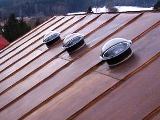 The list of modern light sources is so diverse that it seems to satisfy any lighting requirement. But there are businesses where electric light sources should be banned by default. These are high-danger and particularly dangerous premises. It should not be thought that such enterprises are few.
The list of modern light sources is so diverse that it seems to satisfy any lighting requirement. But there are businesses where electric light sources should be banned by default. These are high-danger and particularly dangerous premises. It should not be thought that such enterprises are few.
If we exclude the defense industry with the production of gunpowder, rocket fuel and other "innocent" substances, then there is still an extensive list of industrial enterprises that produce familiar products under unusual conditions.
Coal mines with methane pollution are on everyone's lips. But the mills or the sugar factories—what is the danger there? But experts know that a suspended, dispersed powder of flour or sugar is an explosive the military would envy. A spark and a vacuum bomb the size of a workshop are ready.
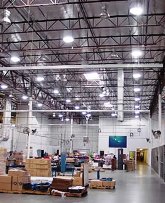
It seems that in these cases there is only one way out: the use of a large number of explosion-proof lamps at low supply voltage. But unsolvable problems are rare in technology. In 1874, the electrical engineer Vladimir Chikolev installed a lighting installation at the gunpowder factory in Okhta, made in the form of tubes with an internal mirror surface. Light from an electric arc located outside is transmitted after multiple reflections to hazardous areas.
This was the first practical example of a new lighting fixture — hollow fibers with a reflective inner coating... Since then, the design of light guides has come a long way. Today, we are well-acquainted with optical lines and micron-diameter light guides: many people use the Internet with a fiber-optic cable connection. Until recently, hollow light guides were known only to a narrow circle of lighting technicians.
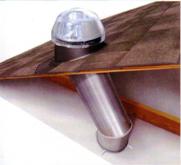
Despite the simplicity of the idea itself, the hollow fiber design has a rather complex optical scheme, with the use of the most modern materials. Let's look at the design using the expanded fiber example.The most commonly used round tube made of polymethyl methacrylate (PMMA) or polycarbonate (PC). High intensity light sources are mounted on one or both sides of the tube. The tube length to diameter ratio is chosen from 30 for single-sided light guides to 60 for double-sided lamp mounting.
A special SOLF type prismatic film is applied to the inner surface of the tube body. Its characteristic is the almost complete reflection of the light falling on the surface at different angles. The technology for the production of prismatic films was developed in 1985. The thin (about 0.5 mm) roll film of the SOLF brand paved the way for the creation of light guides with high and uniform illumination along the length of the tube. A transparent or frosted slit is left along the axis of the tube for uniform emission of light along the length of the fiber.
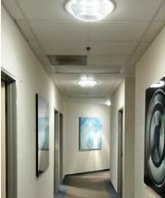
The lion's share of the world market (up to 80%) is occupied by Solatube products from the USA. In this country, there is a government program to stimulate the use of alternative energy sources, so there is a great demand for the corresponding products. The serial production of light conductors has been mastered by the European companies Sunpipe (Great Britain) and Solarspot from Italy.As the companies name suggests, they focus on making light bulbs that can recycle sunlight during the day. The price per meter of such fibers is about 300 dollars, since they use special optics to concentrate the sun's rays.
There is no information on the cost of lighting systems based on optical fibers for explosive and other special rooms. The reason for this is the development of individual projects in each individual case. It can only be assumed that the cost of such applications is very high, but the lives of people and the safety of objects are more expensive.
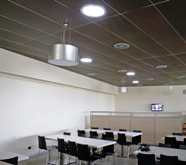
Light guides with small dimensions have unexpectedly been used in household lighting fixtures. With their very high brightness and narrow light emission, LED lamps are hideous light sources when installed separately in chandeliers. But in combination with a light guide, for which they are the ideal lighting device, excellent diffused lighting of the room is achieved.
This characteristic of LEDs was well understood by the Canadian company TIR Systems, which adopted non-detachable lighting modules based on powerful color and white LEDs. The decorative colored lighting fixtures with a power of up to 30W and a general lighting of up to 50W, have light guides with a diameter of 100 and 150 mm with a service life of 50,000 hours. Stylish appearance and modern materials allow to adapt the light lamps to the modern interior of the apartments.
In the future, light guides will gain popularity due to their unique ability to transform light from point sources into uniform, diffused light. And they will cease to be exotic lighting products for narrow areas of application.
